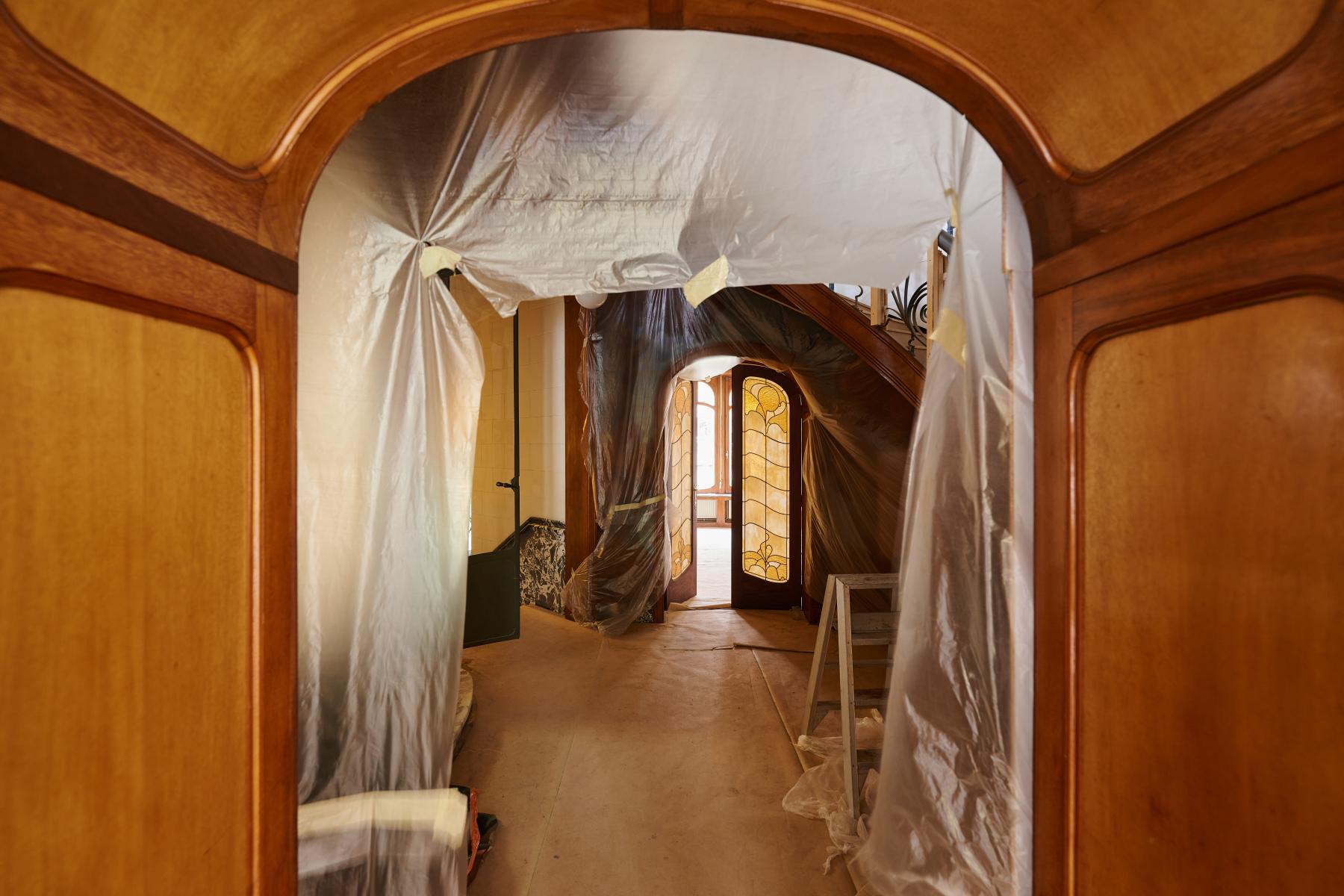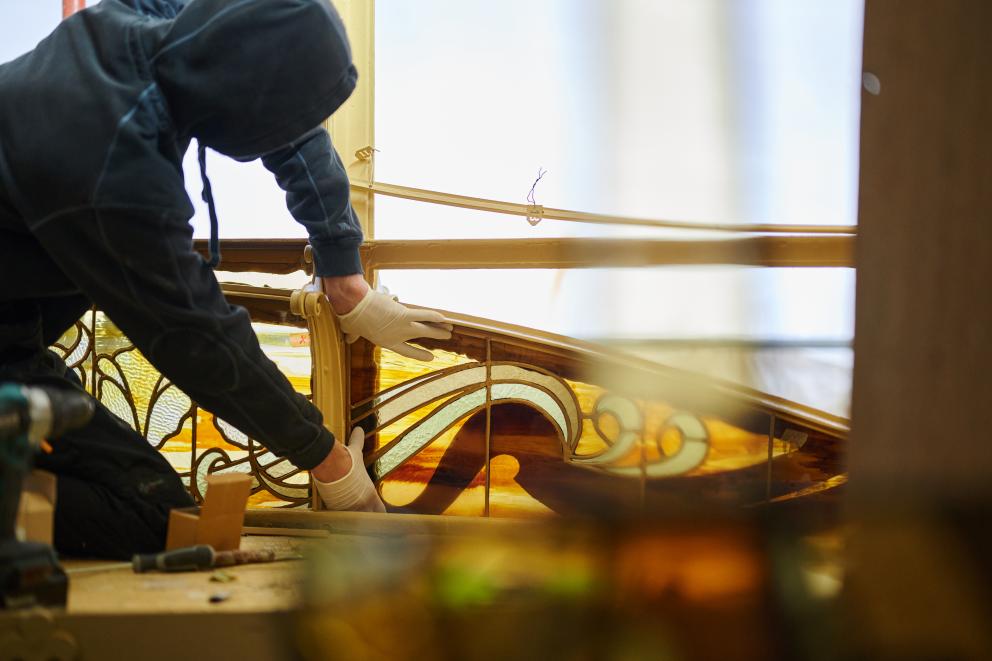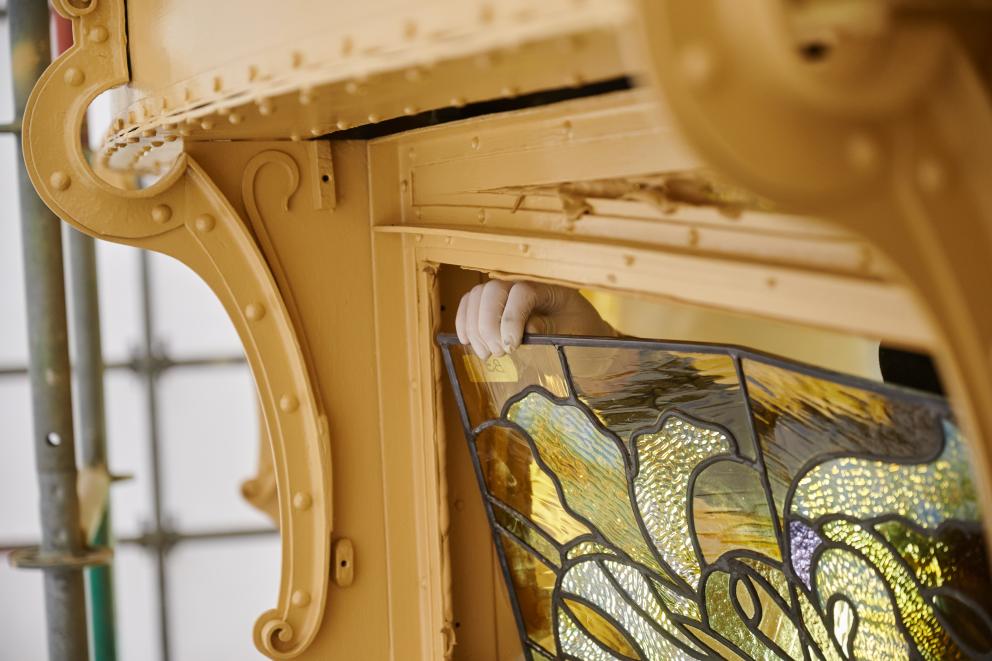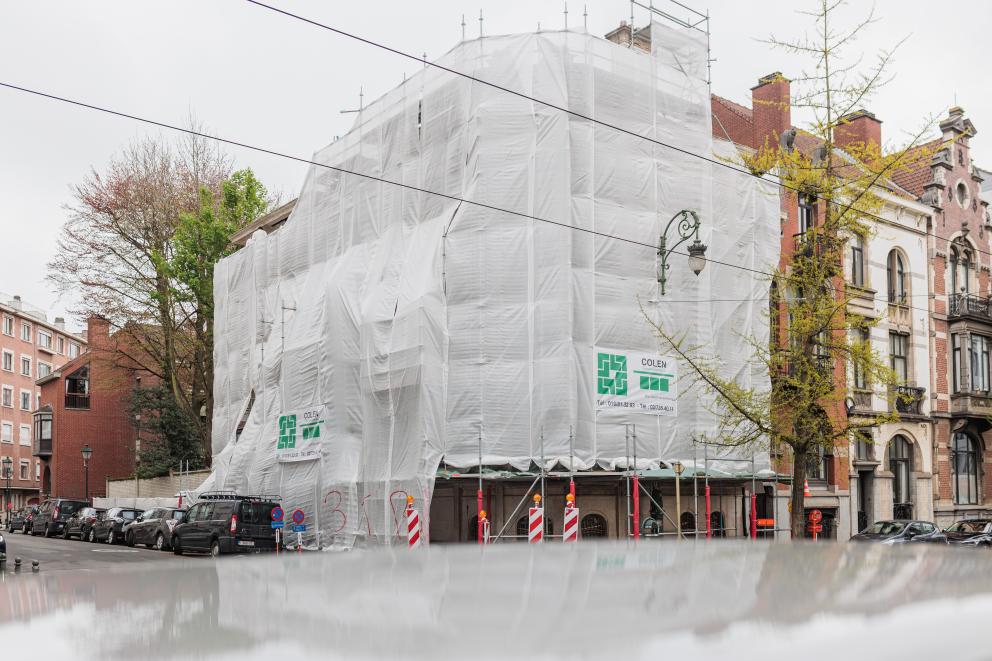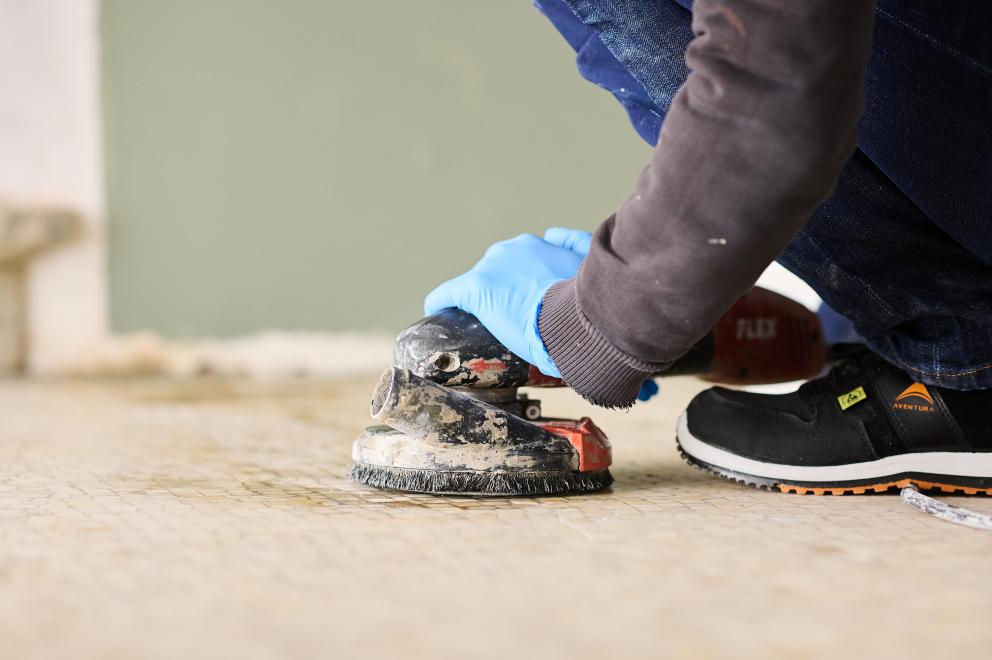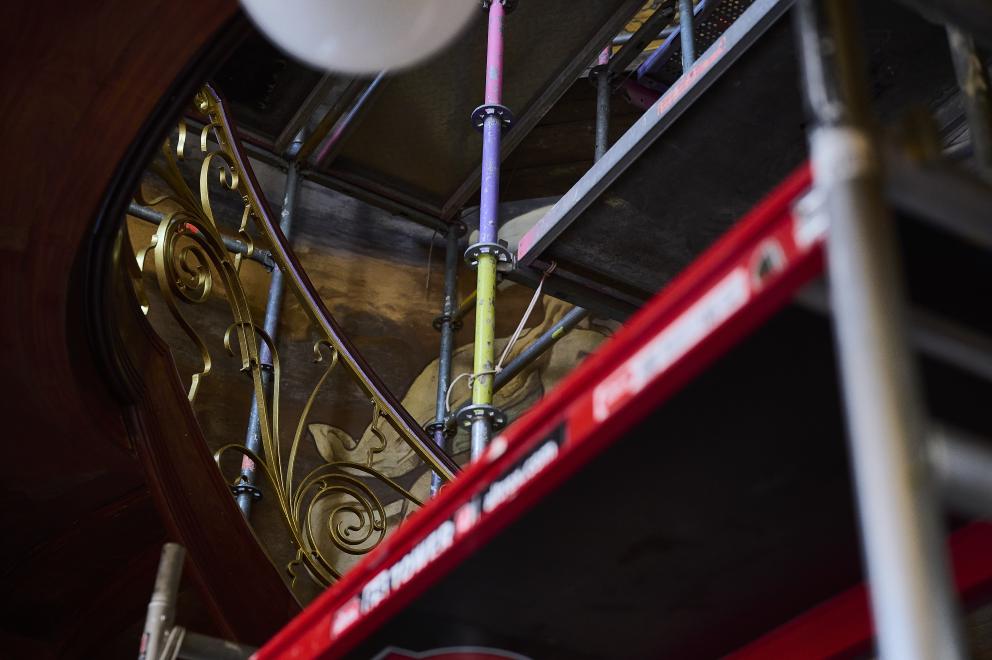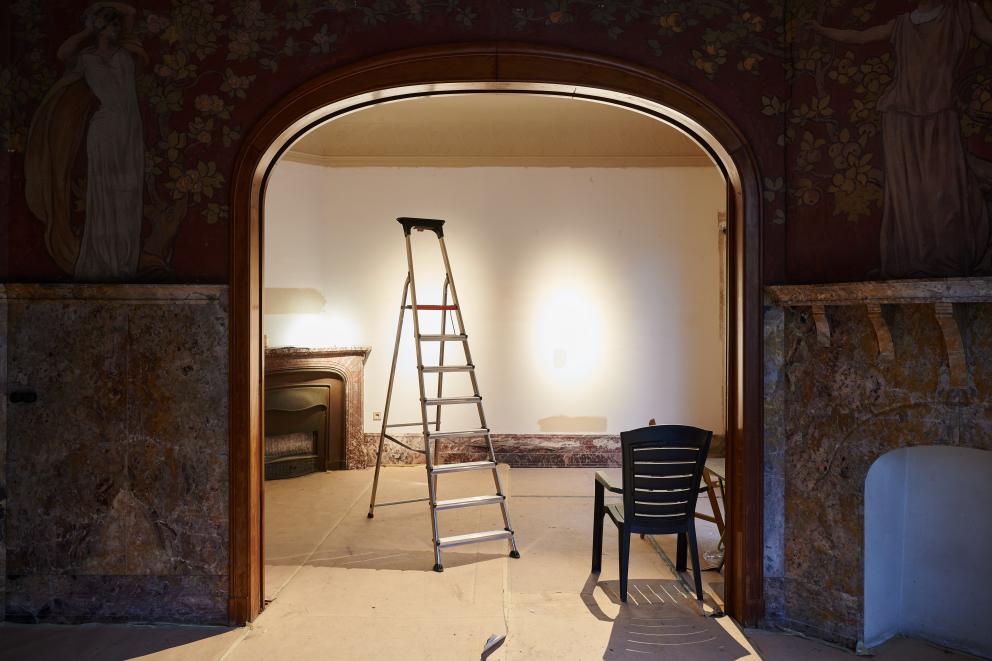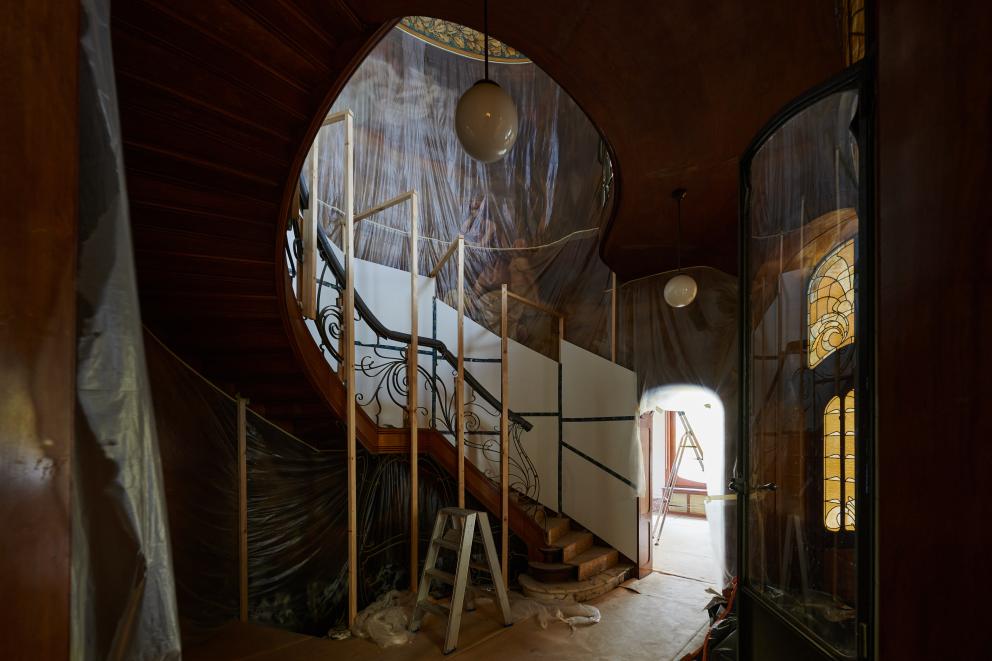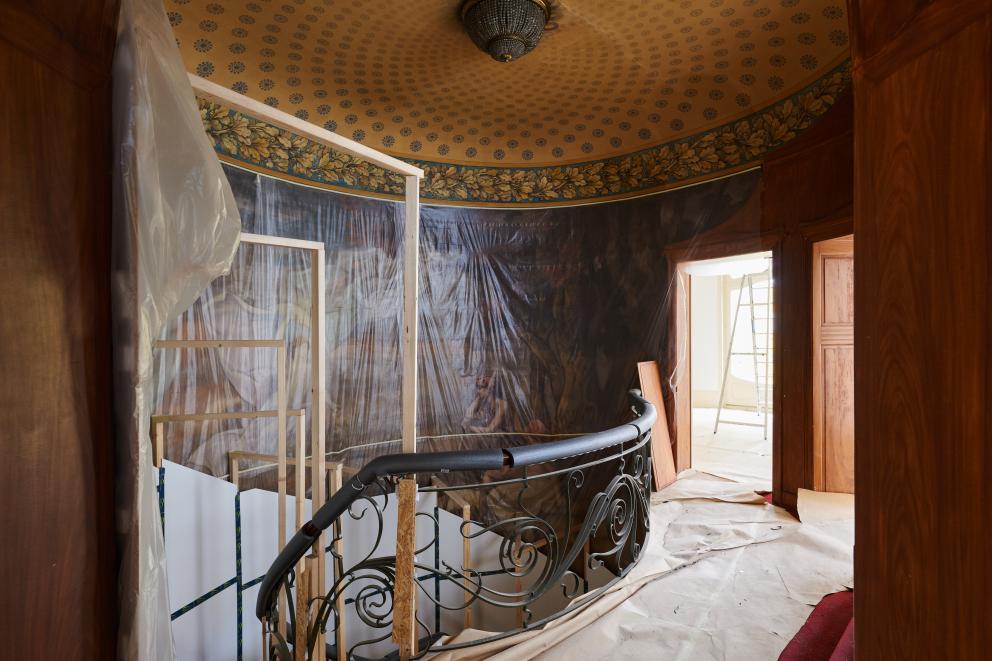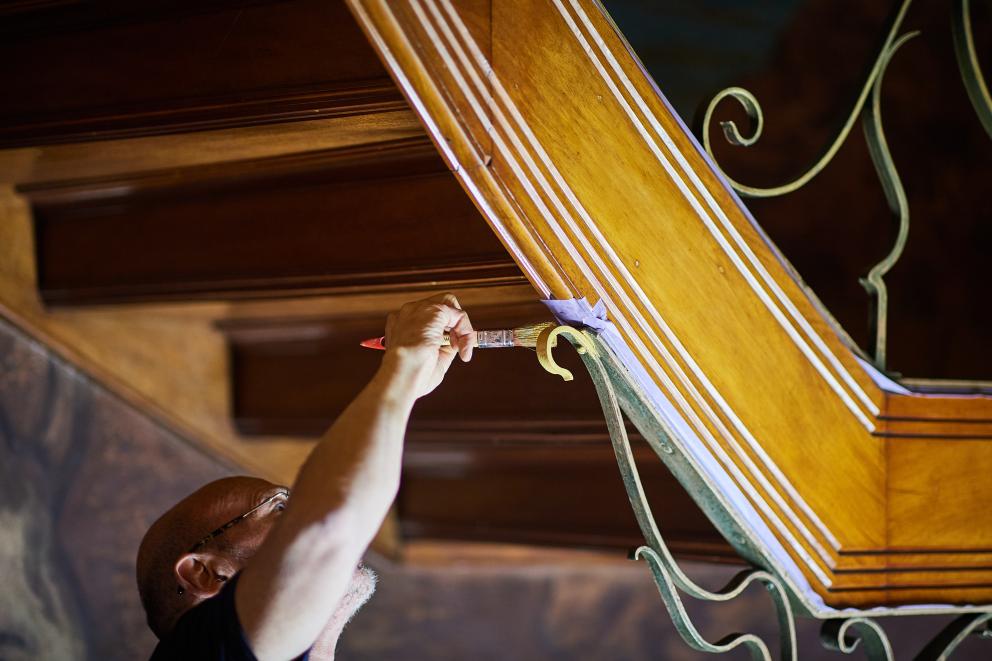Restoration
Philosophy
Such an iconic building as the Maison Hannon must be treated with the utmost care. Firstly, because it was built by the best craftsmen, the same ones that Victor Horta used to create his masterpieces... Secondly, because we are extremely well documented on the stages of its construction and the choices made: accounting invoices, old and more recent photos, stratigraphic surveys that inform and complement each other... We even have information on the power of the light bulbs and the models of radiators. Such a corpus is quite rare and requires that we take the time to compile and interpret it.
To do this, we decided to bring together a team of specialists for each type of finish or element to approach veracity as closely as possible and to combine academic research with field research. In this sense, this house is a space of experimentation that will allow us to understand and further define the art nouveau era. The dialogue between craftsmanship and research remains a central point.
When the Commune and the Region decided to join forces to make the house accessible to the public, the restoration of the site was not the main aim of the project, largely because the building had not been carefully studied. The choice was to make it a museum. Given the wealth of information and knowledge of the couple who commissioned the work, a restoration to the original state gradually became the obvious choice as a means of mediation. However, given the imperatives, we opted for a work in progress, taking advantage of a long-time frame and choosing the unique opportunity to involve the public in the long process. In this sense, the house will not be static. Moreover, the first floor, awaiting its restoration to its original state, will present exhibitions on Belgian Art Nouveau, in dialogue with French art and symbolism.
Past renovations
Since its construction in 1904, the Maison Hannon has already undergone a number of renovations. Discover more by clicking on the buttons!
Renovation of the stained glass windows
Future renovations
A second restoration campaign, in the form of a work in progress (i.e., a gentle restoration that will leave the building accessible to the public), will be carried out until 2030, the year of Belgium's bicentenary. Part of the ticket price will be used to finance this restoration.
These restoration phases will allow the public to be made aware of different aspects and heritage professions. Appropriate mediation (visits, conferences, workshops) will be offered on stained glass, painted decorations, the technological transition of techniques (gas, electricity, heating, etc.). The main intention is to involve the public in the restoration process and to give priority to meaning over contemplation.
The prevailing restoration philosophy is one of reversibility and sustainability. Reversibility is the basis of any restoration in order not to alter the building and to pass it on in the best possible conditions to future generations. However, restoration cannot avoid other contemporary issues, such as the energy question. Integrating these reflections into the restoration offers a new sustainability to the restoration: when the original elements no longer exist, it seems important to us to optimize the situation by qualitative and reversible interventions, so as not to deprive ourselves, in future years, of performing improvements. If, in the preservation of heritage, the central question of transmission remains, its inscription in a long time must also be sustainable.
How to contribute
The cost of the renovation works for the opening on the 1st of June 2023 were partly covered by the Municipality of Saint-Gilles. In december 2022, a crowdgiving campaign was launched to raise money to further fund the restoration of the facade. This was a big succes: between april and may 2023, the facade received a thorough cleaning and renovation so that it was ready for the opening. This would not have been possible without the help of everyone who donated. Thank you very much!
Also after the opening, the visitors continue to contribute to the renovation of the Maison Hannon. Of every ticket bought online, 2€ is kept for future renovation works. These restoration phases will allow the public to be made aware of different aspects and heritage professions. Appropriate mediation (visits, conferences, workshops) will be offered on stained glass, painted decorations, the technological transition of techniques (gas, electricity, heating, etc.). The main intention is to involve the public in the restoration process and to give priority to meaning over contemplation.
At the same time, the non-profit organisation Maison Hannon benefits from a project account with the King Baudouin Foundation. Thanks to this recognition, any donation of more than 40 € per year is tax deductible at 45%. Every donation counts for Maison Hannon vzw. Thanks to you, to the extent of your means, the association, which is responsible for the management of the building, can carry out the restoration and sharing campaigns of this jewel of Belgian art nouveau.
King Baudouin Foundation account: BE10 0000 0000 0404 - BIC: BPOTBEB1
Structured communication: 623/3764/90051
Thank you for your generosity!

